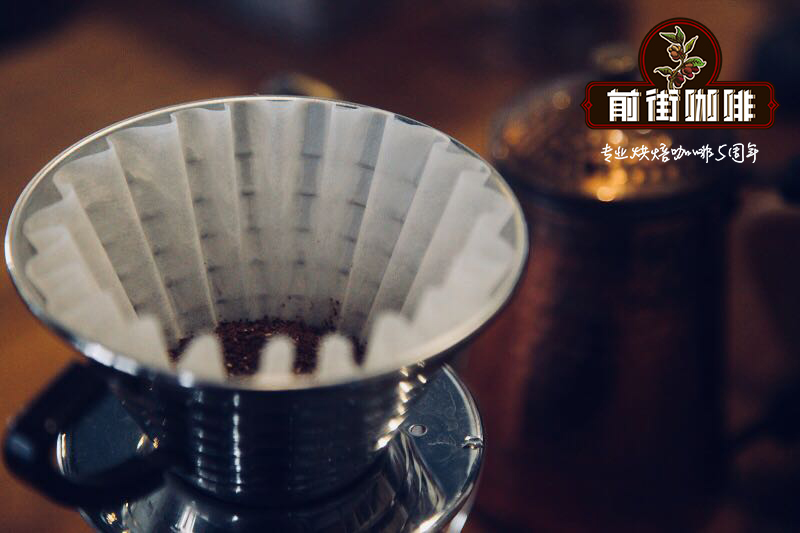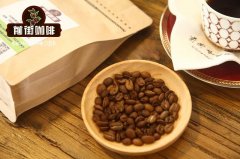Introduction to the cultivation of Organic Coffee in Peru, the Pioneer of Organic Coffee

Professional coffee knowledge exchange More coffee bean information Please pay attention to coffee workshop (Weixin Official Accounts cafe_style)
Peru is located in western South America, bordering the South Pacific Ocean, between Chile and Ecuador. Peru has a very diverse climate, from tropical in the east to dry desert in the west, from temperate to cold in the Andes. Different climates are closely linked to Peru's main geographical regions, including the western coastal plains, the central Andes, and the eastern lowland jungles of the Amazon basin.
Although coffee arrived in Peru in the mid-1700s, it was not until the 20th century, when European demand increased and Indonesian coffee production declined significantly, that Peruvian coffee began to be commercially exported. Britain's presence and influence in the country was particularly helpful in increasing and boosting exports; in the early twentieth century, the British government bought some two million hectares of land from the Peruvian government as payment for loan arrears, and much of it became British-owned coffee plantations.
Today Peru has more than 110,000 coffee growers, coffee exports account for 2 percent of the national economy and 2 percent of global coffee supply, and Peru is rapidly building a coffee chain with excellent growing technology.
Coffee exports from Peru
80% of Peru's coffee exports go to Callao, which accounts for three-quarters of the country's imports and one-quarter of its exports. Another 20% of coffee is exported to Iquitos and Matarani.
Most of Peru's domestic coffee production is exported. In 2012, coffee exported to the United States, Germany, Belgium, Colombia, Sweden and other countries reached 264343 tons, while domestic consumption was only about 10%. In 2014, coffee leaf rust (see El Salvador for details) affected 130,000 hectares in the central highlands of the country, resulting in a 6% drop in production in 2013; the shortfall was 15% compared to the peak yield of 30900 tons.
Peru's coffee industry is one of the country's most important agricultural sectors, accounting for 12 per cent of all agricultural exports in 2004. Peru is also one of the world's largest coffee producers, exporting more than 216 million kilograms in 2006. Peru is one of the world's leading producers of organic and fair-trade coffee beans. These exports make Peru the ninth largest coffee producer in the world, but only the third largest coffee exporter in South America.
Arabica coffee is grown on approximately 200,000 farms in Peru. Most of these farms are small, averaging less than 2 hectares. Most coffee is processed through cooperatives and then distributed through several middlemen before being exported.
Development of Peruvian coffee
As in many Central and South American countries, farms became smaller and more dispersed throughout the twentieth century as large European holdings were sold or redistributed, giving farmers the opportunity to be independent while limiting their access to resources and larger commercial markets. However, there is a lack of organizations or infrastructure to provide financial or technical support to farmers, and NGOs and certification bodies try to fill this gap.
The country has a significant number of organic coffee certifications, Fairtrade, Rainforest Alliance, and UTZ (also known as International Quality Certification). About 30 per cent of small farmers are members of democratic cooperatives, which has increased coffee's visibility locally but has not brought people the incredible quality of their products.
Rainforest Alliance
Fair Trade Certification (Fairtrade)
UTZ certified
:: In the 2010s, Peru was one of the main producers of Arabica coffee and ranked fifth in the world in terms of production and export of Arabica coffee. The remoteness of coffee farms and the incredibly small size of ordinary farms prevent the differentiation of many single farms, which allows microbial development and marketing in other growing areas. The country's lush upland and fine heirloom varieties offer growers the potential to overcome limited infrastructure and barriers to market access, and we're more likely to see these types of advances as yields increase.
Peruvian coffee farmers have small plots, and the micro-wet-milling operation typical of the country is even smaller. From May to September, farmers pick ripe coffee cherries and transport them to manual pulpers and wooden fermenters. (In Peru, coffee is processed primarily by wet grinding on plantation land.) In this process, the moisture content of the coffee beans is reduced to about 20%, and then it is transported to a drying plant. However, this decentralized system is detrimental to coffee growing areas in northern Peru because it leads to inconsistent quality, promoting decay and fungal growth.)
After processing coffee, most farmers walk or ride mules to the nearest town to sell coffee-a trip that can take anywhere from 30 minutes to eight hours. On Saturday, the nearest town square became a buying and selling stop for coffee growers in the surrounding remote areas. Farmers sell their coffee and buy the commodities they need to survive before returning to the mountains.
And in those shopping squares, something unfortunate happens, but it's common-sometimes just one buyer comes along. This significantly reduces the price paid to farmers for coffee. With no space for individual warehouses, only unreliable and expensive collective warehouses, farmers often have no choice but to accept lower prices. The more remote the farm, the more coffee is mixed and traded before it reaches the coast. This unorganized trading system and segregation alienated farmers from the final beverage that came from their farms. For years, growers have been working on bartering parchment coffee for weights and dollars. This completely cuts off the idea of them producing a drink that can be enjoyed, or will be abandoned based on its quality. Intermediate traders will even add weight by throwing sand and water into each bag.
Coffee cultivation in Peru
Peru's coffee fields are mainly distributed in the north of Cagamaca, south of Cusco and Nopu. 70% of the coffee varieties are iron pickups, 20% are kadura, and the rest are other varieties such as kadim. About 75 per cent of coffee growing areas are located at altitudes of 1000- 1800 metres above sea level, while plants grown in shady areas amount to 2000 plants per hectare. Agriculture is mainly done by small farmers, and organic coffee cultivation covers 90,000 hectares.
Peru, as the world's eighth largest coffee producer, has found great business opportunities for organic coffee in Europe and America for more than a decade. However, coffee fields in Peru's mountainous areas have no running water and electricity equipment. Poor Indian farmers have been accustomed to organic cultivation since ancient times and still cannot afford to buy or use pesticides and fertilizers. The authorities are following the trend to develop the organic coffee industry, and government guidance certification, meet the conditions to issue organic licenses for export.
Peru has become the world's largest and cheapest exporter of organic coffee because of its low production costs, along with Mexico and Ethiopia, which are the two largest producers of organic coffee, but sell at higher prices. The authorities intend to develop Peru into the world's leading organic coffee country, just as Vietnam is the world's largest producer of Robusta, but the bottom-price strategy has caused dissatisfaction among many producers. Peru may be dumping organic coffee cheaply, but that doesn't mean boutique coffee is extinct. In the SCAA 2010 Coffee of the Year Cup Test, Cecovasa, an iron pickup truck from Tunkimayo, a town in Puno, southeastern Peru, narrowly beat Guixia, a famous Panama Emerald Estate, with a score of 89.2 to win fifth place.
● About CENFROCAFE
Founded in 1999, CENFROCAFE is one of the largest and most organized cooperative organizations in Latin America, with a presence in most parts of Peru. Despite the overall lack of a cohesive national coffee association or NGO, CENFROCAFE has been able to support nearly 2000 coffee growers by providing agricultural and financial resources, while encouraging producers to learn about roasting and exposure to specialty coffee.
About 92% of coffee sold through CENFROCAFE is organic;100% is certified as Fair Trade. This has led to an increase in product quality and demand for Peruvian coffee on the international market at competitive prices.
Qianjie Coffee: Guangzhou's baking shop, small store but a variety of beans, can find a variety of famous beans, but also provide online store services. https://shop104210103.taobao.com
Important Notice :
前街咖啡 FrontStreet Coffee has moved to new addredd:
FrontStreet Coffee Address: 315,Donghua East Road,GuangZhou
Tel:020 38364473
- Prev

Organic Coffee Benefits and Functions_How to Use Organic Coffee_Organic Coffee Features
Professional coffee knowledge exchange More coffee bean information Please pay attention to coffee workshop (Weixin Official Accounts cafe_style) Go into the cafe and order a cup of coffee. Sometimes you will encounter such a situation. The barista will ask you if you need organic coffee. The word organic sounds reassuring and healthy. Usually miscellaneous grains vegetables, inorganic organic genetically modified hear a lot, then the problem
- Next

Organic coffee beans cultivation characteristics_The impact of organic certification on coffee price quality flavor characteristics
Professional coffee knowledge exchange More coffee bean information Please pay attention to coffee workshop (Weixin Official Accounts cafe_style) One of the most emphasized concepts in boutique coffee is one thing that ordinary commercial coffee does not have, which is traceability. But with the rise of ethical consumerism, more and more customers, bakers and consumers alike, demand not only traceability but openness.
Related
- Guji coffee producing area of Guji, Ethiopia: Humbela, Shakiso, Wulaga
- What is the most expensive variety of Qiloso in BOP multi-variety group?
- How to store the coffee beans bought home?
- Why are Yemeni coffee beans so rare now?
- Ethiopian Sidamo all Red Fruit Sun Sun Santa Vini Coffee beans
- SOE is mostly sour? What does it mean? Is it a single bean? what's the difference between it and Italian blending?
- Is Italian coffee beans suitable for making hand-brewed coffee?
- How to choose coffee beans when making cold coffee? What kind of coffee beans are suitable for making cold coffee?
- Just entered the pit to make coffee, what kind of coffee beans should be chosen?
- Can only Japan buy real Blue Mountain Coffee? What are authentic Jamaican Blue Mountain coffee beans?

